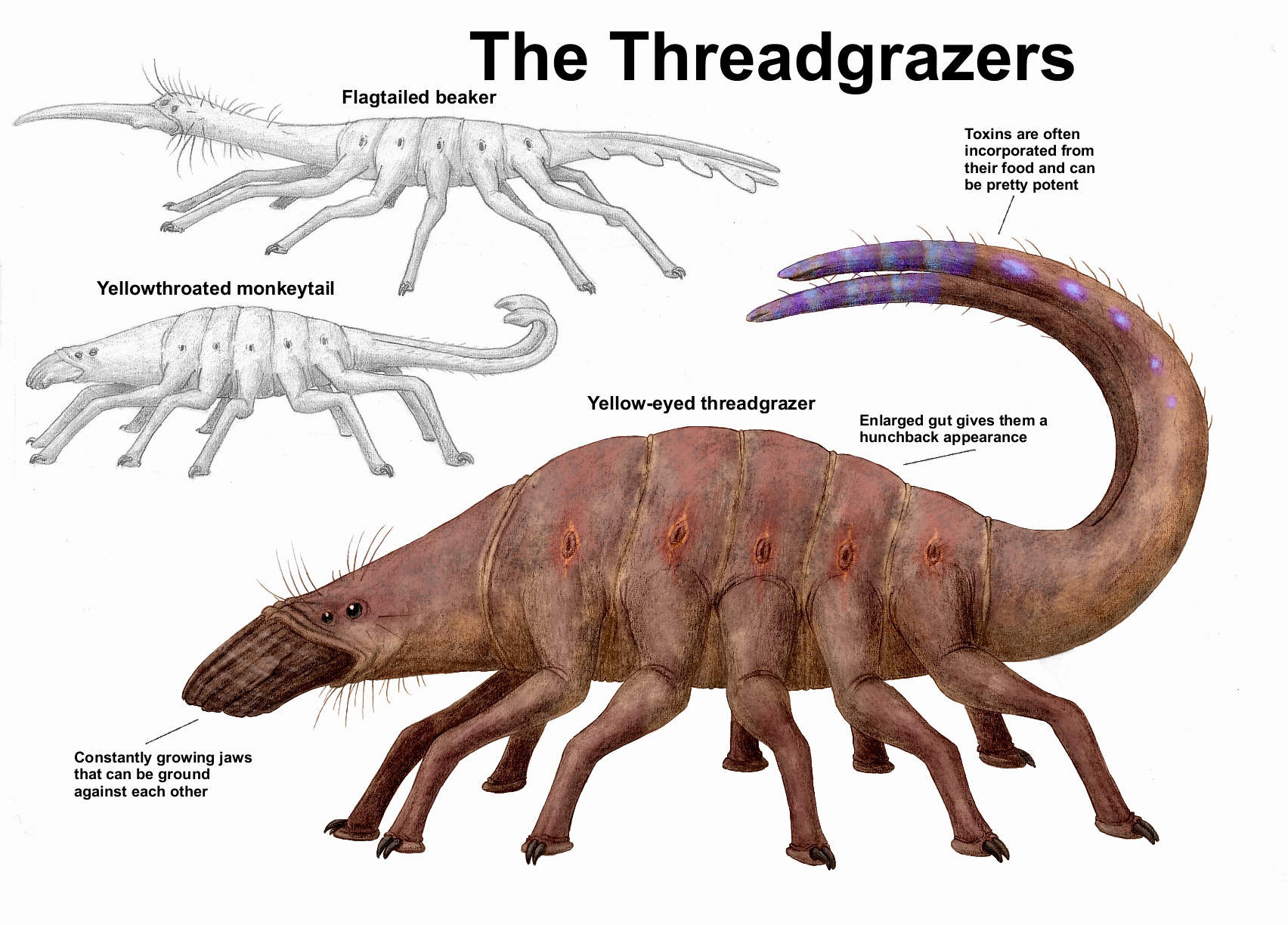HOME | DD
 Ramul — REP: The Threadgrazers
Ramul — REP: The Threadgrazers

#aliens #exobiology #xenobiology
Published: 2021-08-24 10:00:53 +0000 UTC; Views: 27500; Favourites: 224; Downloads: 13
Redirect to original
Description
The threadgrazers are an odd, recently-evolved taxon of spiderpillars that has adopted a herbivorous diet. They are closely related to barkscuttlers and probably share ancestry with honeypot spiders, with their habit to also consume vermiphyte offerings being the gateway to be able to handle vermiphyte tissues in general, from which many groups spread to feeding on stone mosses. Compared to other spiderpillar groups, their jaws have rather sophisciated structures, containing folded layers of hardened tissue that creates uneven erosion to form efficient grinding plates. While most spiderpillars have limited chewing abilities, the threadgrazers have particularly mobile jaws for grinding up stonemoss shells and tearing vermiphyte fibres. In this emerging group, many species have already adapted to feed on poisonous species and incorporating the toxins into their own nematocysts, providing the sluggish creatures with good defence. With a size up to 30 cm in length, they are among the largest spiderpillar species, with the potential to grow even larger, as it makes their digestion more efficient. Especially the ground-dwelling species tend to be gregarious or even actively social, with the young living among the adults, being passively protected until they have built up their own toxin reserves.
Flagtailed beaker: The beaklers are the weird group among the weird group, a primitive offshoot that specialised to feed on vermiphyte exudates. They are active and mobile, being important pollinators of some smaller, ground-covering vermiphyte species.
Yellowthroated monkeytail: The monkeytails are among the more agile threadgrazer taxa, having adapted to climbing in the webs of harvestman plants. Their unique hind limbs are prehensile and bear pads on their tips; their use for climbing lead to shorter threads, and while monkeytails prefer to flee rather than defending themselves with poison, their stings are fairly painful, making any predator think twice about attacking a monkeytail again.
Related content
Comments: 12

👍: 0 ⏩: 1

👍: 0 ⏩: 0

👍: 0 ⏩: 0

👍: 0 ⏩: 1

👍: 0 ⏩: 1

👍: 0 ⏩: 1

👍: 0 ⏩: 1

👍: 0 ⏩: 1

👍: 0 ⏩: 1

👍: 0 ⏩: 1

👍: 0 ⏩: 0

👍: 0 ⏩: 0
























